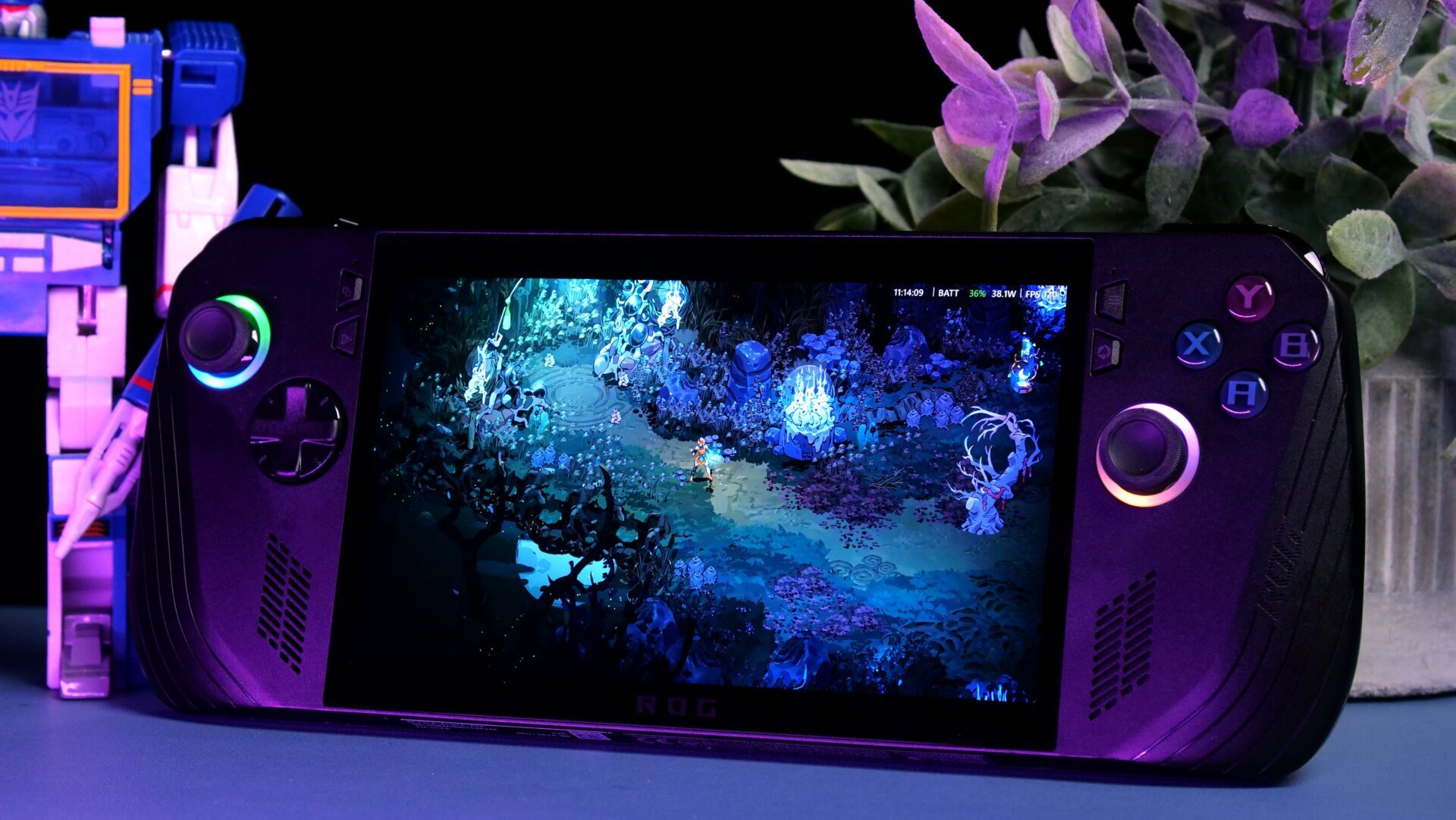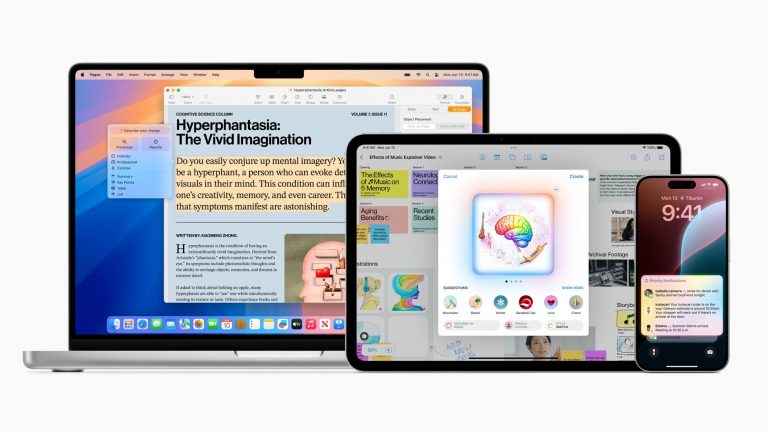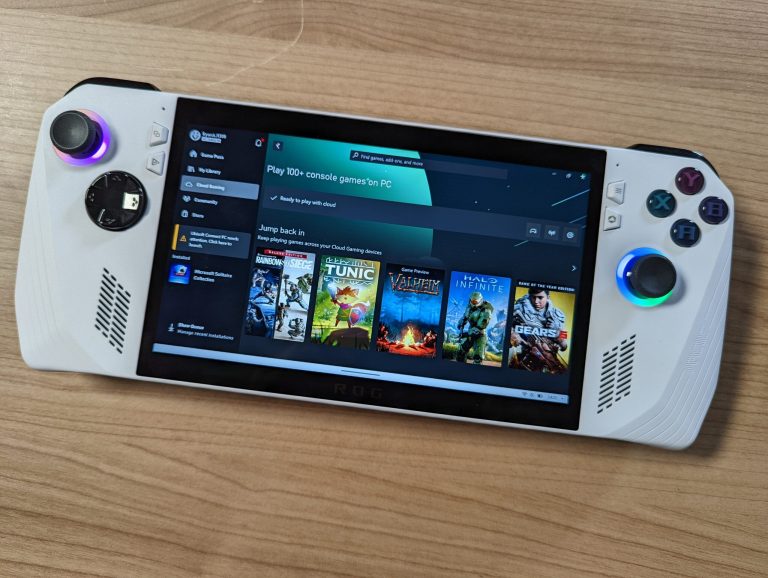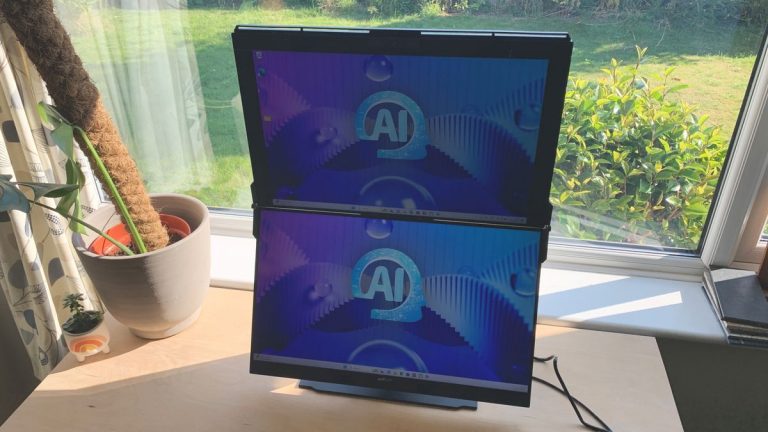You’ve Got a Friend in Me

The $800 Asus ROG Ally X is one of the most expensive gaming handhelds you can buy. It’s a good thing that it’s also the most versatile gaming handheld I’ve used. It’s a mid-cycle refresh of the ROG Ally, but make no mistake, this is the one you want. It’s better in most ways than its predecessor and it’s one of the best small-package gaming experience compared to most other handheld PCs on the market. The Ally X has more storage, slightly better performance, and, most importantly, a two-times bigger battery than the original Ally.
The Ally X sits next to the Steam Deck OLED as a prime example of what’s possible with a gaming handheld. It would be near perfect, but Windows 11 and Microsoft’s inattention to its OS on small screens makes everything harder than it needs to be. Also, that’s a damn high price for any handheld, no matter how good it is.
Asus ROG Ally X
The redesigned ROG Ally is a better console in almost every way that matters. It’s only held back by its high price and Windows 11.
Pros
- A comfortable design with several notable improvements to sticks and triggers
- Performance better than the original Ally and other handhelds
- A battery that can go for close to three hours on some intensive games
Cons
- Screen isn’t as good as the competition
- Windows 11 is terrible in handheld format
- One of the most expensive handheld PCs available
Some folk proclaim that the only way to play on a handheld console, whether a Steam Deck, Lenovo Legion Go, or ROG Ally, is with the device plugged in. That is a far worse way to play any handheld game, whether it’s a Nintendo Switch or your old Game Boy Color. This form factor promises it’s freeing; it can go anywhere: planes, trains, automobiles, you name it. If you’ll always leave it plugged in, why wouldn’t you buy a budget gaming laptop and try to stuff it in your luggage?
The problem with handhelds has been their batteries. You can get a solid session with the early-access version of Hades II on most of these devices, but not with any game that pushes graphics and solid framerates. On the ROG Ally X with the new 80Wh battery (twice as big as the Ally’s 40Wh), I got two to nearly three hours in demanding games like Baldur’s Gate III and Cyberpunk 2077. Some players would say that’s not enough, but they’re wrong. It’s enough playtime before being reminded that taking a break is good. Three hours is most of a domestic plane flight. It’s twice as much as my typical train commute.
Its redesigned chassis and buttons make it my favorite handheld since the Steam Deck OLED. Will it replace Valve’s Deck as my most recommended handheld PC? No, unfortunately not. The Ally X is $800 compared to $650 for the 1 TB OLED Deck. Asus’ device also uses Windows 11, and no matter how much its built-in Armory Crate SE UI has improved, it’s still too annoying to jump into your games through multiple launchers on such a small screen.
But if you know what you’re doing, the Ally X is a beast. It performs better than the regular Ally in CPU and game benchmarks, thanks to the better RAM and battery with access to higher standard TDP. It’s one of the most expensive handhelds you can get, but it’s also come the closest to extolling the full promise of this nascent design.
I want a gaming PC with the portability of a Nintendo Switch and the battery life of a Game Boy. We also need it to be as controllable with thumbsticks and face buttons as it is with a mouse and keyboard. In that way, the Steam Deck OLED is still your best first choice, especially if you’re on a budget. The Ally X is a close second.
Asus ROG Ally X Design and Display
It’s a Bigger, More Comfortable Handheld PC
There’s more than a simple color swap gone into the Ally refresh. It’s just a few millimeters thicker and a slightly heavier console at around 1.5 pounds. The new device redesigned the feel of the thumbsticks, triggers, and backplate. Overall, it’s a far more comfortable build. No more ridge along the back acts as an awkward shelf for your ring finger, and it’s much easier to grip the triggers now that they slope more towards the handheld’s sides.
There’s a new 8-directional d-pad as well, but the thumbsticks are easily the biggest improvement overall. The older Ally’s sticks felt thin, but the refreshed model has more heft without being flicky. Asus claimed it’s easier to replace the sticks if there’s any issue this time. The only thing I feel missing from the design is RGB backlights in the face buttons, perhaps the only good thing I had to say about MSI’s Ally-aping Claw.
The rear air vents are all found in the same places, but if you’ve used an Ally before, you’ll notice the buttons along the top have been shuffled around. There are no more XG Mobile ports; instead, you have two USB-C ports that can charge the device (though only the lefthand one supports Thunderbolt 4). Many common Steam Deck docks, such as a test unit provided by Gulikit that looks like an old SNES, will have difficulty reaching over to plug into that port. Still, it’s an overall improvement.
The SD Card slot has been repositioned to the top right side of the Ally. That comes after some users and The Verge cited issues with the original Ally occasionally cooking SD cards. We haven’t experienced any problems on that front, but it will take many more weeks and the luck of the draw to find any issues.
There’s only one version of the Ally X available to buy. It has to have a full 1 TB of storage, which will still fill up quickly if you’re not sparing about your installs. It’s a shame none of that time and attention went to the display. The new handheld sports the same 7-inch, 1080p screen as last year’s. It wasn’t a bad screen, and it can still display 120 Hz refresh rates, but it still looks dull compared to the Steam Deck OLED or even the Nintendo Switch OLED.
Asus ROG Ally X Battery Life
It Lasts Long Enough for a Solid Gaming Session

I’ve been doing regular sessions with my brother, playing Baldur’s Gate III co-op. He’s at his computer, and I’m lounging hedonistically on the couch, sipping mead and reveling in my brother’s hunched discomfort. The problem with this setup is that I can’t get more than a few hours before leaving my throne and searching for a charger, at least with my Steam Deck OLED.
On the Ally X, I’ve managed to get between two and a half to three hours of battery life without dipping below 20%, enough for our regular sessions before calling it quits for the night.
I put the Ally X next to the Ally and set both to linger on Control at the same TDP and graphics settings. While the older Ally was fully depleted in less than two hours, the Ally X was still going strong at 60%. I managed to get closer to four hours on less demanding games running at higher-performance settings. You can squeeze out more time if you tune down graphics and speeds, but I know few gamers will make that tradeoff.
I’d go further than merely arguing that handhelds are better played unplugged. Asus’ devs claims they did a lot to rework how the device handles heat, but even so on a hot summer’s evening playing the Ally X I felt that the device could get pretty uncomfortable for my left hand with my index finger precariously close to the USB-C port. With the handheld plugged in and not running any games, I registered around 104 degrees Fahrenheit with a laser thermometer around where the device was charging. The rest of the console, including the screen, was relatively cool to the touch.
Despite the extra heat from the battery, I didn’t detect any loss in framerate even after a multi-hour session plugged in. ROG has proved capable of managing heat with its Zephyrus laptops, so I’m glad the streak continues with the Ally X. Even then, I would still suggest you play unplugged for the best and most pure handheld experience.
Asus ROG Ally X Performance
A Small Performance Bump Over the Ally

The Asus ROG Ally X uses the same CPU as the top-end Ally from last year, the AMD Ryzen Z1 Extreme. It’s the same chip also found in the Legion Go, and it has met with some of the best performance compared to other AMD or (beleaguered) Intel Meteor Lake chips. That’s not the end of the story for the Ally X since the big difference now is RAM and battery upgrades.
The new Ally version has 24 GB of LPDDR5 memory versus 16 GB on the last handheld. The new twin RAM sticks also have a faster speed, but the enhanced battery is pushing the Ally X ahead, which allows for better power draw. I was genuinely surprised at the increase in performance from last year’s Ally to Ally X.
In 3DMark Time Spy tests, the Ally X scored around 200 points higher than the Ally, which isn’t much but considerable, noting it’s the same processor. On basic CPU benchmarks like PCMark10, Cinebench, and Geekbench 6, I saw similar increases in performance of a few hundred points.
The difference is more significant in games. In Forza Horizons benchmarks under the same settings, including AMD FSR turned to performance, I was seeing 15 more FPS than on the older Ally. It was less significant in other games, like Cyberpunk 2077, where the jump was from 21.52 FPS to 25.86 FPS, with default medium-to-high settings and FSR set to auto.
Compared to the Lenovo Legion Go with its 16 GB of 7500Mhz LPDDR5X RAM and Z1 Extreme, the Ally X still did rather well in our tests. With its larger screen set to a 25 TDP, the Legion Go experienced 30 FPS less than the Ally X in Forza: Horizons and 20.64 FPS in the Cyberpunk benchmark. Tune down the higher resolution on the Legion Go’s larger screen, and you’ll see scores closer to Ally X but not quite at the same level.
This is the one gaming handheld from a major OEM that could offer as close to the full PC experience without as many compromises. Still, you should choose some less intensive games if you want to game for longer. The new Ally promises you can get better TDP in silent and performance mode, up to 13 W and 17 W, respectively. You would never have a problem with top-down titles like Hades II on Steam Deck, Ally, or any major handheld, but it’s nice to know you can draw more power and still be fair to good on battery life.
Asus ROG Ally X Software
Microsoft Needs to Do Something About Windows 11 on Handheld

The latest updates to Armoury Crate SE do a lot to cover up the lingering, glaring issues with Windows 11 in a handheld format. Despite a few bugs resulting in occasional frozen screens and other issues that should have been fixed with the latest 1.5.11 patch, the UI makes selecting different games and launchers relatively painless. It’s pretty easy to set the automatic control and graphics setting profiles for each game through Armoury Crate or the Command Center.
But it can’t take you all the way there, and it’s why the Steam Deck will remain supreme until Microsoft decides to create a handheld-centric version of Windows. Loading in Steam from Armoury Crate opens the app in Big Picture mode, which is still better for controllers, but the same can’t be said for Epic Games Store, GOG, or even the Xbox app despite Microsoft’s recent improvements.
There are still so many instances of game launchers failing to recognize your controller’s inputs and requiring liberal use of the touchscreen (and then applying a microfiber cloth to not muddy your visuals). Windows 11 loves popups, and even though you can turn many off, it’s much more challenging if you don’t have an easy way to plug in a mouse and keyboard.
Microsoft and Xbox still seem hesitant to pull the trigger on an Xbox handheld. Microsoft’s Xbox head, Phil Spencer, previously said his handheld for on-the-go gaming was the ROG Ally. He, of all people, should know the tribulations of using Windows 11 on such a small device. Perhaps if he gets his hands on the Ally X, he might have more impetus to pull the right levers at his company and get things moving on a mobile-first version of Windows.
The Ally X Will Become Your Lively, Capable, and Very Expensive Friend

The Ally X is better than its predecessor in every way. If the Steam Deck OLED is the prettiest and easiest to use of all the mainline handheld gaming devices, then the Ally X is the best if you want all the options and the best battery life.
It also costs a premium, and there are no lower storage options that would typically help keep the costs down. It’s $150 more than the 1 TB Steam Deck OLED, $100 more than the Lenovo Legion Go, and $150 more than the younger Ally. It’s the same price as the highest-end MSI Claw, but the Ally X can justify its cost, whereas the Claw can’t.
It also makes going back to the older Ally that much harder. I can switch back to my Steam Deck, especially because I enjoy its display and UI far better than the Ally X. Other than the price, the original Ally has no benefits compared to the X.
If you don’t mind the extra effort it takes to run Windows 11 on a 7-inch screen, and if you happen to have 8,000 pennies rolling around in your desk drawer, then the Asus ROG Ally X is your friend.
Source: gizmodo.com





